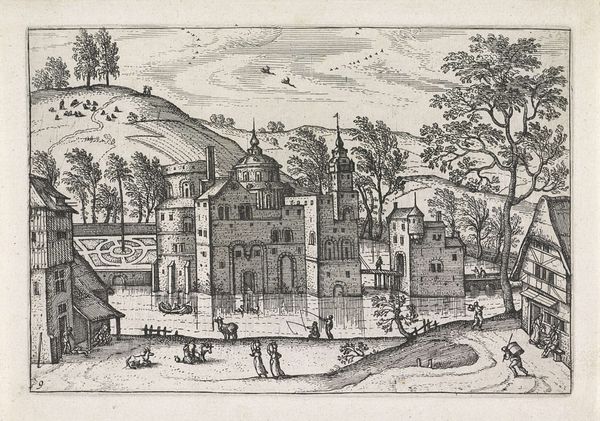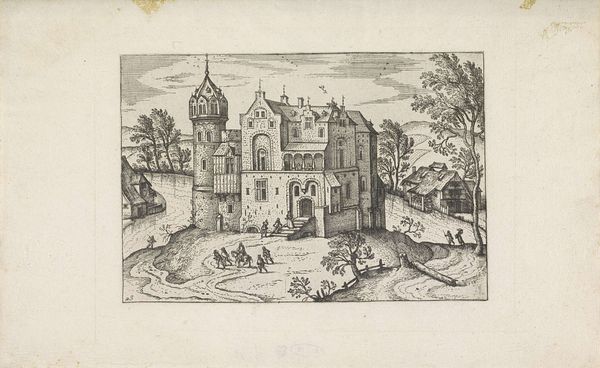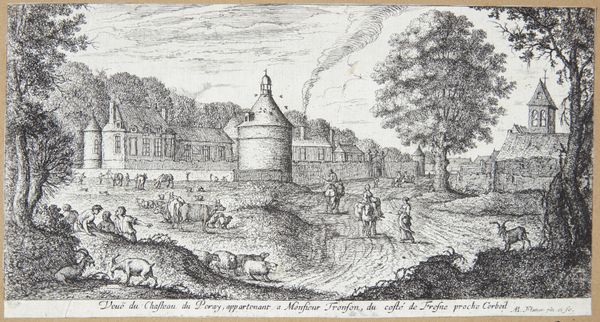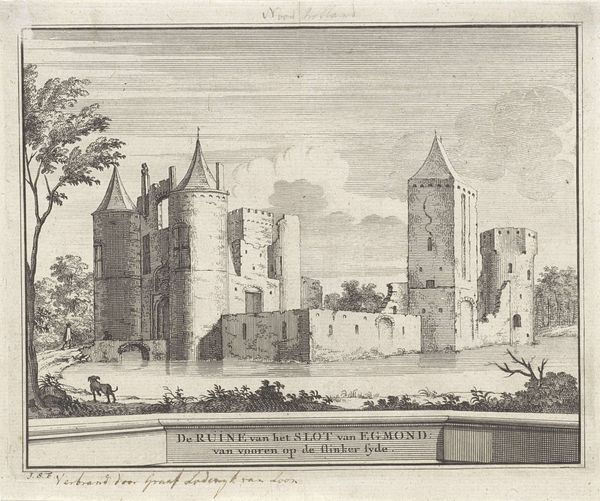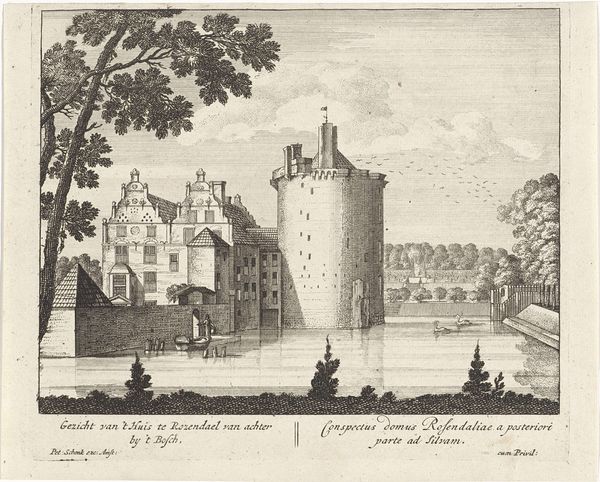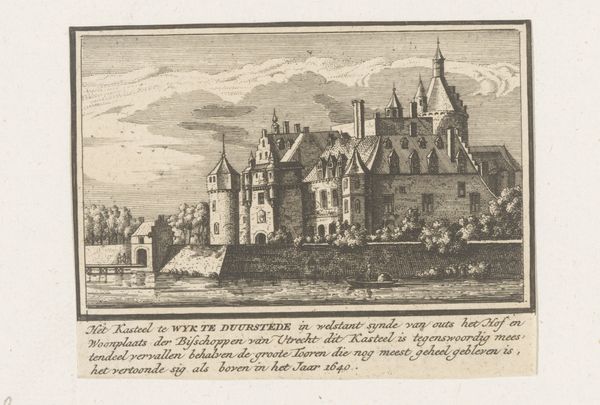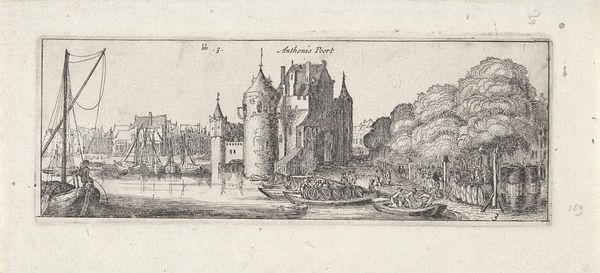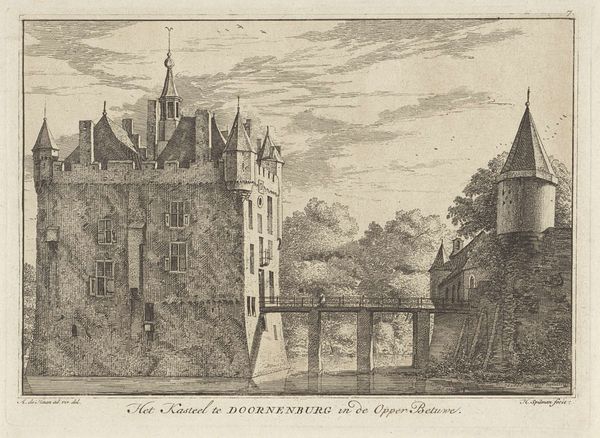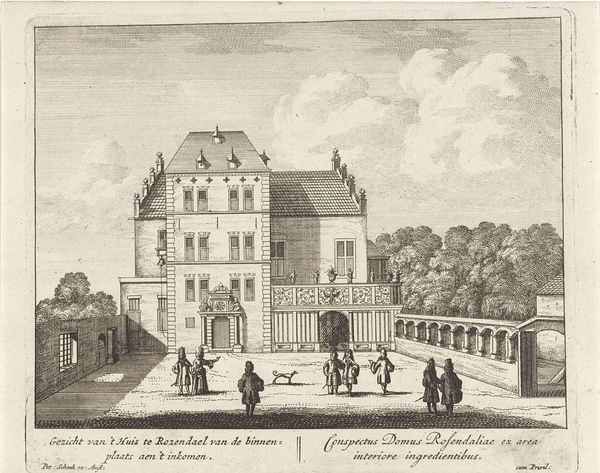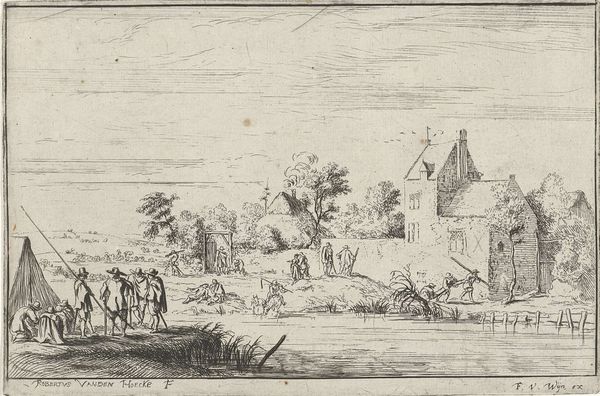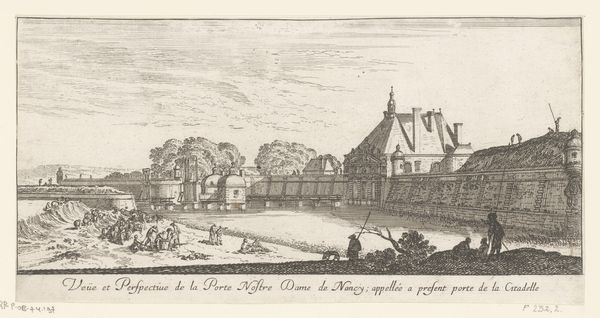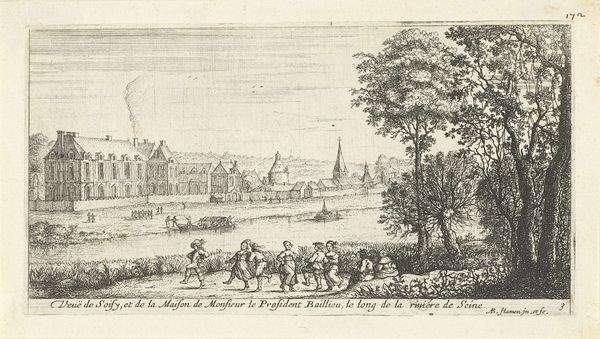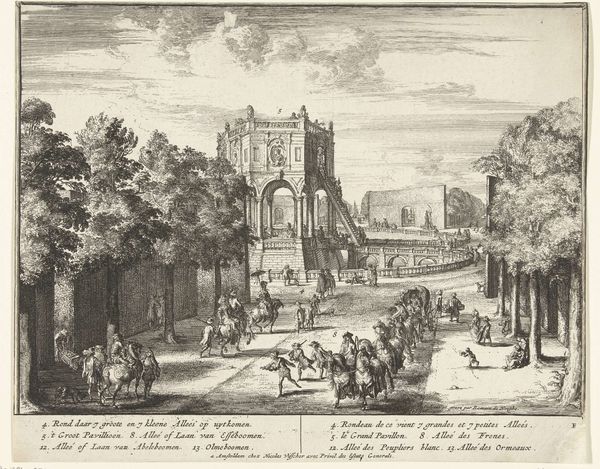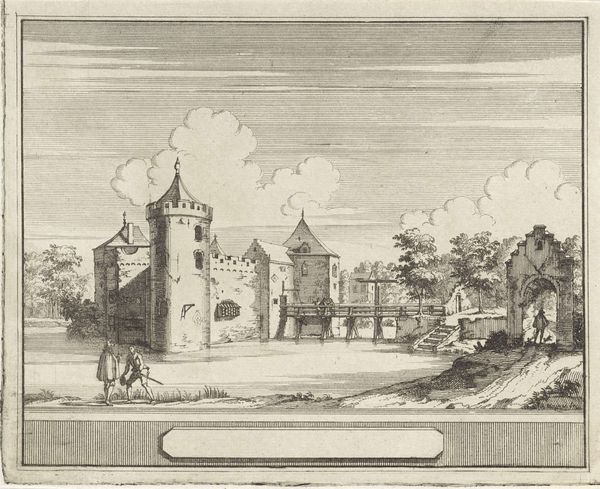
drawing, etching, ink, engraving, architecture
#
drawing
#
medieval
#
baroque
#
pen drawing
#
etching
#
landscape
#
form
#
ink
#
line
#
history-painting
#
engraving
#
architecture
#
realism
Dimensions: height 123 mm, width 217 mm
Copyright: Rijks Museum: Open Domain
Editor: So, this is "Landschap met kasteel," or "Landscape with Castle," made between 1648 and 1692 by Albert Flamen, an etching rendered in ink. It’s really quite detailed, and I am struck by the sense of both grandeur and isolation the castle projects. What do you see in this piece from a historical perspective? Curator: Well, beyond its aesthetic qualities, consider the cultural context of the 17th century. Landscape art like this wasn’t just about pretty scenery; it played a crucial role in shaping national identity and celebrating aristocratic power. The castle itself becomes a symbol. What might the placement of the castle, surrounded by water, signify to its intended audience? Editor: Hmmm… safety? Exclusivity? Almost like it's physically separating itself from the common world? Curator: Precisely. And think about the patronage system. Flamen likely created this for an aristocratic patron, someone who sought to reinforce their status through imagery. How do you think the architecture depicted might influence the viewer’s perception of power and authority? Editor: I guess the towering spires and solid structure project a feeling of strength, as if it's impenetrable. Were these kinds of landscape views common as a display of power at this time? Curator: Absolutely. Images like this helped legitimize social hierarchies and convey a sense of established order. The "natural" world is actively shaped by the castle. What do you think about how seemingly objective landscape art is often deeply entwined with socio-political agendas? Editor: That's a great point. I initially viewed it as just a landscape, but understanding its function as a representation of power and societal structures adds so much more to my understanding. Curator: Exactly. By examining the historical context, we see how art can function as a potent form of social and political communication. It transforms our perception of not only the artwork, but society at that time.
Comments
No comments
Be the first to comment and join the conversation on the ultimate creative platform.
